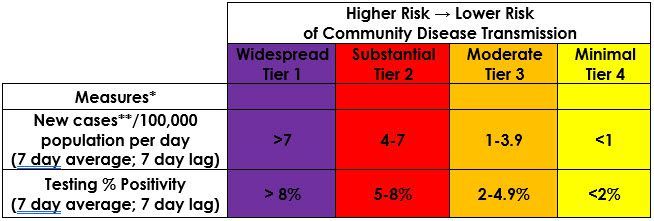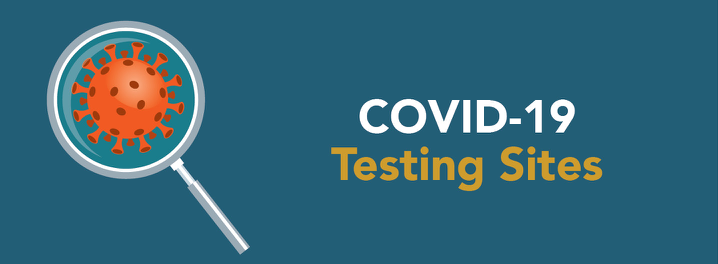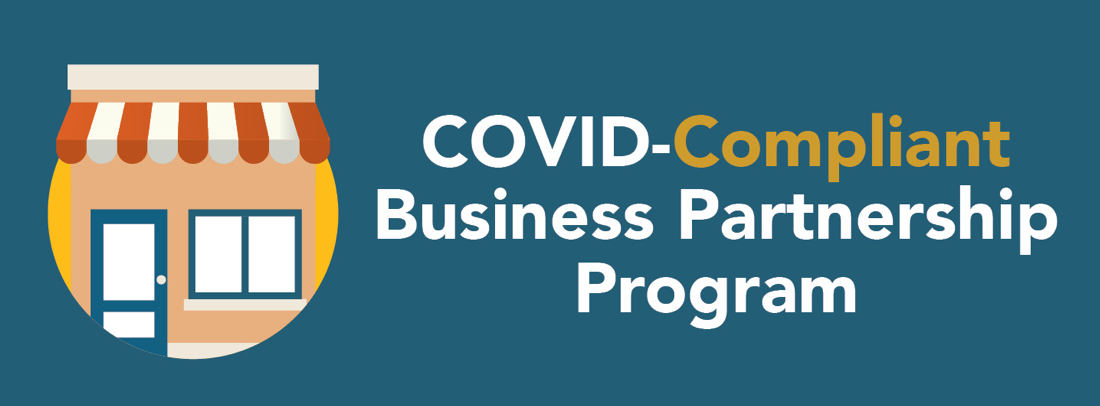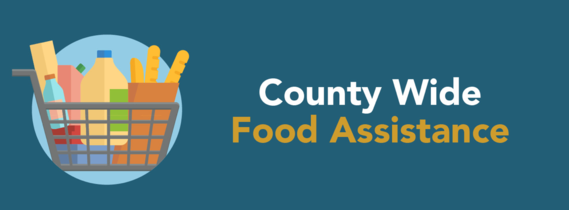 How the State’s New COVID-19 Guidelines Affect the County
While California’s new guidelines for counties to reopen specific business sectors offer a simpler, more limited set of metrics, the immediate impact on San Bernardino County residents and businesses is fairly limited, with most of the previous restrictions still in place.
One exception: barbershops and hair salons, which previously could only offer services outside, may now serve patrons indoors (subject to specific modifications). Also, indoor shopping malls can open again with limited capacity.
The new system replaces the state’s “Monitoring List” with a four-tiered, color category system. A county’s reopening guidelines are based on whether a county is ranked as purple (widespread risk), red (substantial), orange (moderate) or yellow (minimal).
“COVID-19 will be with us for a long time and we need to adapt,” Gov. Gavin Newsom explained during a press conference on Friday. “This idea that it was going to go away in the summer during the warmer months, that somehow it would disappear … has obviously been substituted by a different reality that we’re not only experiencing here in California but all across the nation.”
Currently 38 counties, representing 87% of the state’s population, are in the purple category — and San Bernardino is among them. Purple counties are those reporting More than seven new cases or more per day per 100,000 residents and a testing positivity rate of more than 8 percent. Moving to a lower tier will require meeting that tier’s criteria for two weeks prior to the move, with a mandatory 21-day wait time between each move.
“We obviously are hoping our county can move into the red category, and that will require making steady progress on our case and positivity rates,” said Corwin Porter, the County’s director of public health. “Over the past 7 days, we have averaged 11.7 new cases per 100,000 residents, and to move to the red tier, we need to be at 7 cases per 100,000 residents. In addition, our positivity rate is still in the 10% range, and we need to be at a steady 8% or lower, so we clearly still have more work to do.”
The tier system will not include thresholds for hospitalizations and ICU bed availability, as these are criteria the counties up and down the state are meeting. A spike in a county’s hospitalization, however, could be used as an “emergency brake” for a county tier determination, according to the governor.
Porter emphasized the need for more testing countywide and to pursue the same safety guidelines the County has been promoting the past several months, but with particular vigilance on avoiding social gathering.
“We see that the majority of cases are coming from social gatherings where families and friends – even in a small group – are not following the same protocol as when they are shopping or going about their regular routine,” said Porter. “You might be with extended family or close friends, but until we have a vaccine, wear a mask and keep your distance between each other.”
Following are rules for counties in the purple category:
- Hair salons: open indoors with modifications
- Retail: open indoors at 25% capacity
- Malls: open indoors at 25% capacity and food courts closed
- Personal care services (nail salons, body waxing, etc.): outdoor only
- Museums, zoos and aquariums: outdoor only
- Places of worship: outdoor only
- Movie theaters: outdoor only
- Hotels: open with modifications
- Gyms: outdoor only
- Restaurants: outdoor only
- Wineries: outdoor only
- Bars and breweries: closed
- Family entertainment centers: outdoor only, like mini golf, batting cages and go-kart racing
- Cardrooms: outdoor only
- Non-essential offices: remote work only
- Professional sports: no live audiences
- Schools: must stay closed
A status of industry-by-industry guidelines can be found via this link, accessible via the County COVID-19 webpage.
Tenant and Landlord Protection Legislation Signed to Address Hardship from COVID-19
Gov. Gavin Newsom signed legislation protecting tenants from eviction and property owners from foreclosure due to the economic impact of COVID-19.
The legislation says no tenant can be evicted before Feb. 1, 2021 as a result of rent owed due to a COVID-19 related hardship that occurred between March 4 and Aug. 31, 2020, if the tenant provides a declaration of hardship according to the legislation’s timelines. For a COVID-19-related hardship that accrues between Sept. 1, 2020 and Jan. 31, 2021, tenants must also pay at least 25% of their rent due to avoid eviction.
Tenants are still responsible for paying unpaid amounts to landlords, but those unpaid amounts cannot be the basis for an eviction. Landlords may begin to recover this debt on March 1, 2021, and small claims court jurisdiction is temporarily expanded to allow landlords to recover these amounts. Landlords who do not follow the court evictions process will face increased penalties under the Act.
The legislation also extends anti-foreclosure protections in the Homeowner Bill of Rights to small landlords; provides new accountability and transparency provisions to protect small landlord borrowers who request CARES-compliant forbearance; and provides the borrower who is harmed by a material violation with a cause of action.
Additional legal and financial protections for tenants include:
- Extending the notice period for nonpayment of rent from three to 15 days to provide tenant additional time to respond to landlord’s notice to pay rent or quit.
- Requiring landlords to provide hardship declaration forms in a different language if rental agreement was negotiated in a different language.
- Providing tenants a backstop if they have a good reason for failing to return the hardship declaration within 15 days.
- Requiring landlords to provide tenants a notice detailing their rights under the Act.
- Limiting public disclosure of eviction cases involving nonpayment of rent between March 4, 2020 – January 31, 2021.
- Protecting tenants against being evicted for “just cause” if the landlord is shown to be really evicting the tenant for COVID-19-related nonpayment of rent.
Additional information on the Tenant, Homeowner, and Small Landlord Relief and Stabilization Act can be found in the State’s online fact sheet.
More Inmates and One Sheriff Employee Test Positive for COVID-19; One Additional Sheriff’s Employee
As of today, a total of 330 County jail inmates have tested positive for COVID-19. Many of the inmates are only experiencing minor symptoms of the virus. The infected inmates are in isolation, being monitored around the clock, and are being provided with medical treatment. A total of 304 inmates have recovered from the illness.
All inmates continue to be provided with face coverings, cleaning supplies, soap, and are urged to wash their hands repeatedly throughout the day. They are routinely reminded of the need to practice social distancing to slow the spread of COVID-19.
One additional department employee tested positive for COVID-19 and is self-isolating at home. A total of 174 department employees have tested positive for COVID-19; with 161 having recovered from the virus. Other employees are expected to return to work in the next few weeks.
Latest Stats
47,879 Confirmed Cases (up 0.5 % from the previous day)
736 Deaths (up 2.8% from the previous day)
488,750 Tests (up 1.9% from the previous day)
For more statistics from the COVID-19 Surveillance Dashboard, click the desktop or mobile
tab on the County’s sbcovid19.com website.



|